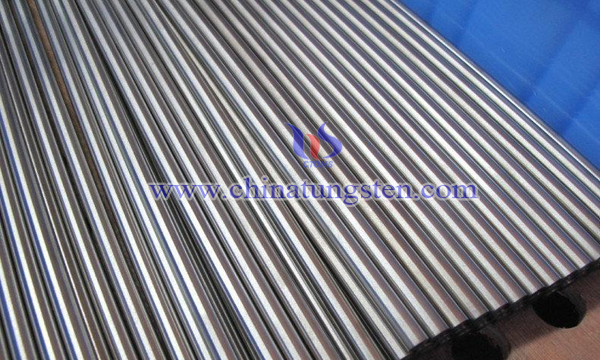Preparation of Nickel-Tungsten Composite Rods by Powder Metallurgy
- Details
- Category: Tungsten Information
- Published on Monday, 05 February 2018 17:09
The power generated by a nuclear power station reactor is generally controlled by raising or lowering the control rod assembly in the reactor core. Fuel assemblies for modern reactor cores typically use two types of rod control assemblies to control reactivity, namely the RCCA and GRCA.

Domestic scholars proposed an advanced gray rod control module (GRCA) for nuclear reactors. The module mainly consists of an elongated tubular element, a main neutron absorber arranged on the tubular element and an inner support tube. The main neutron absorber material is preferably tungsten, which has a 2200 m / s neutron absorption microscopic capture cross-section of 10 to 30 nm. The inner support tube material is made of a group of nickel alloy or stainless steel. The inner support tube is required to be closely combined with the main neutron absorption bar to form a composite bar, and the wall thickness of the inner wall is uniform and the dimension precision is high.
At present, the preparation methods of metal composite pipes are mainly casing and core rod composite method, and tungsten rods are inserted into nickel alloy bushing, of which the inner diameter of bushing is slightly larger than that of core rod. Then the outer metal casing and the metal mandrel are compacted together to form a composite rod structure through the hard coordination of the outer die and the drawing and contraction. The disadvantage of this method is the high accuracy requirement for the core and metal bushing size, especially for the thin and long thin-walled tube parts, which requires higher straightness of inner diameter tolerance. In the process of subsequent processing, the hard coordination of the external mould and drawing and contraction is required, which causes the complex structure of the equipment and the low post bonding rate.
In order to solve the above technical problems, some scholars have proposed an improved scheme for manufacturing nickel-tungsten composite bar technology and prepared a nickel alloy / tungsten composite bar by powder metallurgy sintering and cladding method, which avoids the problem of reducing the strength of the tungsten rod and the low processing yield when the conventional nickel alloy layer of the foundry metallurgy technology is adopted, it also overcomes the shortcomings of high precision casing size, complex equipment structure and low fitting rate of the casing and the core rod when the traditional casing and core rod composite method is adopted, the method is simple, the equipment investment is small, the production cycle is short, the environment is pollution-free, the rate of finished product is high, and the production can be produced in batch.
- Tungsten Manufacturer & Supplier, Chinatungsten Online: www.chinatungsten.com
- Tungsten News & Prices of China Tungsten Industry Association: www.ctia.com.cn
- Molybdenum News & Price: news.molybdenum.com.cn
- Tel.: 86 592 5129696; Fax: 86 592 5129797; Email: sales@chinatungsten.com



 sales@chinatungsten.com
sales@chinatungsten.com